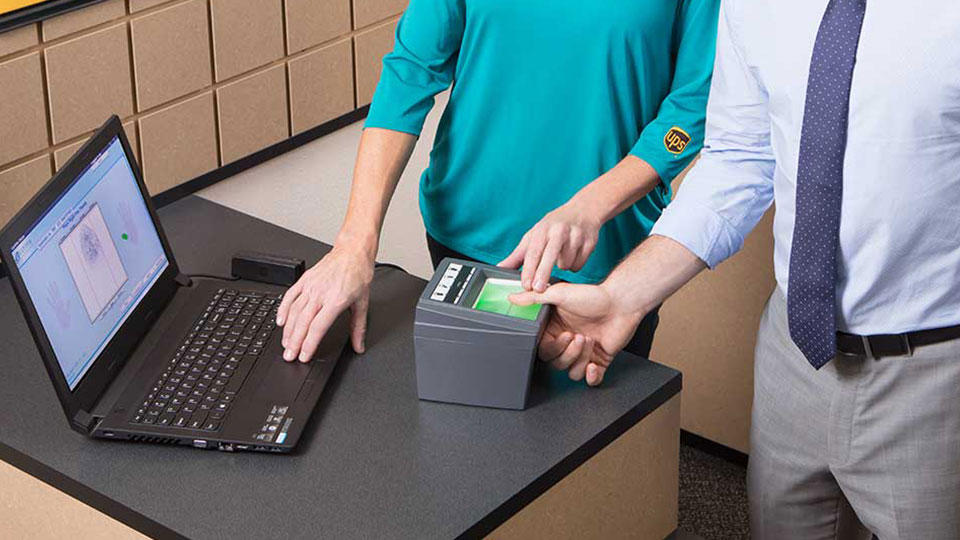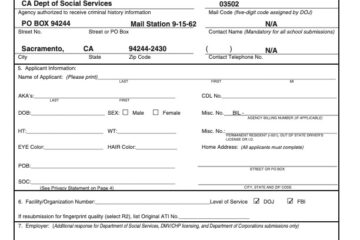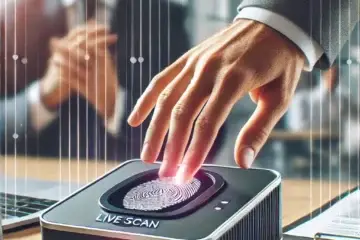Fingerprinting is a widely used method for identification and background checks in various industries, from law enforcement to employment and immigration. Traditionally, fingerprinting was done using ink and paper, but with technological advancements, live scan fingerprinting has become increasingly popular. In this blog, we’ll explore the differences between live scan and ink fingerprinting, highlighting their unique features, benefits, and when each method is appropriate.
What Is Ink Fingerprinting?
Ink fingerprinting is the traditional method of capturing fingerprints using ink and paper. In this process, a person’s fingers are coated with ink and pressed onto a fingerprint card. The inked fingerprints are used for identification, criminal background checks, or other official purposes.
The process is straightforward but can sometimes be messy and imprecise. It involves the physical transfer of ink from the individual’s fingers to a fingerprint card, which is then sent for processing. Ink fingerprinting has been used for centuries and is still common in certain situations, especially when live scan technology is unavailable.
What Is Live Scan Fingerprinting?
Live scan fingerprinting is a more modern method of capturing fingerprints. Instead of ink, it utilizes a digital fingerprint scanner to capture an individual’s fingerprints electronically. The person’s fingers are placed on the scanner, which captures a high-resolution image of the fingerprints.
This image is then electronically transmitted to the relevant authorities, such as law enforcement agencies or background check services. Live scan fingerprinting eliminates the need for ink, reducing the potential for errors and making the process much faster and more accurate.
Key Differences Between Live Scan and Ink Fingerprinting
Method of Capture
The most obvious difference between live scan and ink fingerprinting is the capture method. Ink fingerprinting requires physical ink and paper, while live scanning uses a digital scanner to capture fingerprints electronically.
Accuracy and Clarity
Live scan fingerprinting provides much higher accuracy and clarity compared to ink fingerprinting. Ink prints can sometimes smudge or become unclear, leading to issues with processing or rejection. In contrast, live scan captures clear, high-resolution images that are more reliable for identification.
Speed of Processing
Live scan fingerprinting is faster than ink fingerprinting. Once the fingerprints are captured, they can be instantly transmitted to the relevant authorities, speeding up the background check or identification process. Ink fingerprinting, however, often requires mailing the fingerprint cards and waiting for them to be manually processed, which can take longer.
Convenience
Live scan fingerprinting, with its digital capture, offers a more convenient experience for both the individual and the authorities. There’s no need for physical cards or ink. The individual can simply place their fingers on a scanner, and the process is done. This eliminates the mess and potential for errors with ink fingerprinting, providing a more comfortable and reassuring experience.
Cost
Ink fingerprinting is typically less expensive than live scan fingerprinting. Ink fingerprinting only requires basic materials like ink, paper, and a fingerprint card, making it a more affordable option. However, the costs associated with live scan fingerprinting have decreased significantly, and it is now a widely accessible option for many types of fingerprinting services.
Environmental Impact
Live scan fingerprinting has a lower environmental impact compared to ink fingerprinting. Ink fingerprinting uses materials like ink and paper, which can contribute to waste. Live scanning, being a digital process, eliminates the need for consumables and can be more environmentally friendly in the long run.
When Should You Use Ink Fingerprinting?
Despite the advantages of live scan fingerprinting, there are still situations where ink fingerprinting may be the preferred method. For example, ink fingerprinting is often required in jurisdictions or for specific purposes where live scan technology is unavailable. Some legal or government processes may still rely on traditional ink fingerprinting, especially for historical records.
Ink fingerprinting may also be used when live scan systems are inaccessible in remote or underserved areas or when people prefer the more traditional method. If the prints are unclear or smudged, the individual may need to repeat the process, which can be time-consuming and inconvenient.
When Should You Use Live Scan Fingerprinting?
Live scan fingerprinting is often the preferred method for most modern fingerprinting needs. It is the go-to option for criminal background checks, immigration applications, and employment screening. Live scans’ accuracy, speed, and convenience make them the ideal choice for organizations and individuals needing efficient and reliable fingerprinting services.
Live scan fingerprinting is widely used when security, accuracy, and efficiency are critical. It is the most effective and reliable option for applying for a job that requires a background check, undergoing a criminal background investigation, or applying for a visa.
Benefits of Live Scan Fingerprinting
- Higher Accuracy and Quality
Live scan fingerprinting captures clearer, more accurate prints that are less likely to be rejected due to poor quality. - Faster Processing Time
Since fingerprints are captured digitally and transmitted instantly, the processing time is much quicker than ink fingerprinting. - Convenience
Live scan fingerprinting is more convenient because it eliminates the need for messy ink and fingerprint cards. The digital process is faster and easier for the individual and the authorities involved. - Cost-Effective in the Long Run
Cost-Effective in the Long Run: while live scans may have a higher initial cost, the speed and accuracy benefits can lead to long-term savings, especially for organizations or individuals requiring frequent fingerprinting services. This makes live scan fingerprinting a cost-effective solution that reassures the audience that they are making a sound investment in their security and efficiency.
Conclusion
In summary, live scan and ink fingerprinting serve similar purposes but are quite different in their methods and benefits. Live scan fingerprinting offers a modern, digital solution that is more accurate, faster, and more convenient. On the other hand, ink fingerprinting, while still used in some situations, is a more traditional, slower method that can be prone to errors and delays. This conclusion reinforces the audience’s understanding of their options.
Live scanning is better if you need fast, accurate, and reliable fingerprinting services. However, traditional ink fingerprinting can still be an effective solution in areas where live scanning technology is unavailable or in specific cases where it is required. At Anshinotary, we offer professional live scanning services to meet your needs and ensure the security and accuracy of your documents.
Frequently Asked Questions About Live Scan and Ink Fingerprinting
What is the difference between Live Scan and ink fingerprinting?
Live Scan captures fingerprints electronically and transmits them directly to the DOJ or FBI. Ink fingerprinting involves manually rolling fingerprints on a fingerprint card, such as the FD-258, which is then mailed for processing.
When is ink fingerprinting required instead of Live Scan?
Ink fingerprinting is usually required for out-of-state licensing, federal background checks, immigration documents, and when the receiving agency does not accept Live Scan. Learn more about the types of fingerprint cards we provide and how they’re used.
Can I choose between Live Scan and ink fingerprinting?
It depends on the agency requesting your background check. Some accept only Live Scan submissions, while others require ink fingerprinting on physical cards. Always confirm with the requesting agency.
How do I schedule a fingerprinting appointment?
You can schedule online through our Contact Page or by calling our office. We offer both in-office and mobile appointments for Live Scan and ink fingerprinting.
What do I need to bring to my fingerprinting appointment?
Please bring a valid, government-issued photo ID (such as a driver’s license or passport). If you are getting ink fingerprinted, bring the correct fingerprint card (like FD-258) and any forms provided by the requesting agency.
Also Read: How to Prepare for Your Live Scan Fingerprinting Appointment




0 Comments